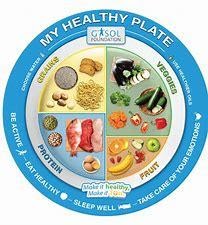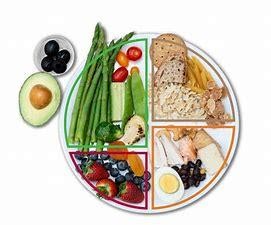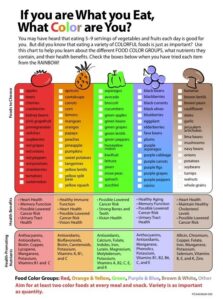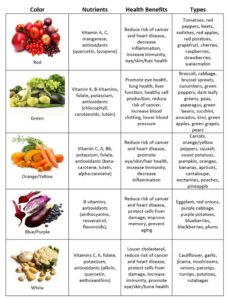
Are you wondering what diet to follow after a diagnosis of AL Amyloidosis? With so many unknowns and what-ifs, it is a scary and overwhelming time. Guest writer Lori Grover, herself an Amyloidosis survivor, provides helpful insights into healthy eating.
So much is out of your hands as you wait for test results and treatment options. I was terrified when I received my diagnosis five years ago. I found focusing on the things I could control (like following doctors’ orders, taking medications on time, reducing stress, and eating a clean diet) gave me back a small sense of power over my life.
I recently had the privilege of chatting about diet and Amyloidosis with Julieann Ray Cheng, a fellow Amyloidosis warrior, dietician, and author of soon-to-be-published “The Delightful Dietician” cookbook, who offered specific guidance, tips, and recipes to help manage the disease.
While there is no diet specific to AL Amyloidosis, Julieann recommends following a healthy diet to help you stay as strong as possible while you face treatment.
5 Tips for Healthy Eating: Variety is Key!
The following suggestions are based on the Dietary Guidelines for Americans 2020-2025.
1. Include all the food groups: vegetables, fruit, protein foods, dairy, and fat.


2. Colour your plate. Be sure to include various fruits and vegetables to get all the vitamins, minerals, nutrients and antioxidants you need.
3. Customize your diet according to any specific restrictions given by your physician. Your doctors may tell you to avoid certain foods that can interact with your medications. If you have kidney involvement, you may also have to closely monitor electrolytes and minerals such as sodium, potassium, and calcium. As this will differ for every patient, be sure to follow your doctor’s recommendations closely.
4. Be prepared to battle nausea as chemotherapy may upset your stomach. On days when you receive treatment, you may not feel like eating much. Eat small meals, and prep for the days you don’t feel well. Have healthy foods on hand, like homemade soups in the freezer, for quick and easy meals.
5. Watch your fluids. Keep a bottle of fresh water with you and frequently sip to avoid dehydration and dry mouth. If you suffer from edema, your doctor may give you specific directions about how much fluid you can consume daily.
Foods to Avoid when you have Amyloidosis
Watch out for sodium. A healthy diet when you have Amyloidosis includes no more than 2300 mg of sodium per day (certain disease conditions like heart failure and kidney disease may recommend 1500 mg of sodium or less per day). Many foods contain surprisingly high amounts of sodium, so keep an eye on the labels. Choose fresh, frozen, and no-salt-added canned fruits and vegetables. Stay away from processed foods, the salt shaker, spice blends or soup bases that contain salt.
Speak with your doctor before consuming alcohol. The current recommendation is two alcoholic beverages per day for men and one alcoholic beverage for women. However, if you take regular medications, it is best to avoid daily consumption of alcohol because it can place additional stress on the liver. Alcohol contains a significant amount of calories and is not essential to a healthy diet. It’s best to avoid or limit alcohol to special occasions.
Limit added sugar to 10 percent of your daily calories (200 calories or 50 grams of added sugars based on a 2000 calorie diet). Watch out for beverages like soda, coffee with added syrups, and sugary juices. A better choice is water with lemon or other fresh or frozen fruit to provide flavour. Foods that contain added sugars include breakfast cereals and bars, candy, high-fat milk and yogurt, desserts, and sweet snacks. Consider fresh or canned fruit to satisfy your sweet tooth and provide your body with essential vitamins, minerals, and fibre.
Limit saturated fat to 10 percent of daily calories (200 calories or 22.2 grams of saturated fat based on a 2000 calorie diet). Fried foods, high-fat meats, whole-fat dairy, ice cream, coconut or palm oils, and butter contain saturated fat. Skip these whenever possible and choose healthy fat instead. Baking or roast foods, choose lean cuts of meat and remove the skin, and use olive, canola, sunflower, safflower, or soybean oil in place of butter, coconut or palm oil.
How Does Your Diet Rate?


The most important part of sticking to a healthy diet when you have Amyloidosis is to enjoy your food while you nourish your body. Making necessary adjustments will have an enormous impact on your overall health.
If you feel overwhelmed, consider making one change at a time and adapting the transition to your lifestyle. Most changes will set in and feel like your new normal after about three weeks. Look at each day as an opportunity to nourish your body with healthy foods.
Make the right choices, and your body will thank you! For more tips on implementing these healthy changes check out our posts Amyloidosis and Diet or our Treatment Survival Guide.
Finally, Julieann has graciously provided two delicious healthy recipes from her upcoming cookbook that she routinely prepares as she manages her amyloidosis diet.
Enjoy!
Lori Grover is a guest blogger for Mackenzie’s Mission. She was diagnosed with AL Amyloidosis in 2016 and writes to share experiences and lessons learned during her journey. More wonderful blogs by Lori can be found on her page Amyloid Assassin. Lori is a freelance copywriter, and a mom of two wonderful boys. She loves writing, reading, and all things crafty.
Julieann Ray Cheng is an Ohio-based dietician who was diagnosed with AL Amyloidosis in 2018. When not in the kitchen, she loves to travel with her family and shop for goodies. Keep an eye out for her cookbook “The Delightful Dietician,” available in the fall of 2021.
Easy Vegetable Soup (Servings: 6 – 10 oz bowls)
1 small onion, diced
2 teaspoons of olive oil or oil of your choice
4 stocks of celery, diced
2 potatoes, diced or 1 c small pasta noodles (if reducing potassium)
1 pound frozen mixed vegetables (carrots, corn, green beans, peas)
14.5 oz canned tomatoes, diced (may use low sodium or no added salt)
6 cups vegetable broth (may use low sodium or no added salt broth)
1 teaspoon garlic powder
½ teaspoon white or black pepper
In a medium saucepan add olive oil, diced onions, diced celery. Sautee on medium heat for 5 minutes.
Add vegetable broth, mixed vegetables, diced potatoes, garlic powder, and white or black pepper.
Bring to a boil and simmer for 15 – 20 minutes uncovered.
***If reducing the potassium omit the diced potatoes and diced tomatoes, add 1 cup small pasta noodles, ½ pound of mixed vegetables, and 2 cups vegetable broth.
By: Julieann Ray Cheng, The Delightful Dietitian
Color Your Plate Chicken Sheet Pan Dinner (Servings: 4)
4 chicken breasts
1 teaspoon garlic powder
1 teaspoon onion powder
½ teaspoon black or white pepper
1 teaspoon Rosemary
2 diced sweet potatoes, or 6 diced carrots (if potassium restriction is needed)
1 pound frozen tricolor peppers and onion blend
1 pound fresh or frozen broccoli or brussels sprouts
1 garlic clove, minced
2 tablespoons oil
Pre-heat oven to 400 degrees F.
Line a sheet pan with parchment paper for easy cleaning. Spray with cooking oil.
Season chicken breast with garlic powder, onion powder, black or white pepper, and Rosemary. Place on one side of the sheet pan. Add diced sweet potatoes on the other side of the sheet pan. Bake at 400 degrees for 30 minutes.
While the chicken breast and sweet potatoes are baking. In a bowl add frozen tricolor peppers and onion blend, broccoli or brussels sprouts, garlic, and oil.
Remove pan from oven. Add vegetable mixture to the sweet potatoes and toss. Place back in the oven for an additional 25-30 minutes until the chicken reaches an internal temperature of 165 degrees F.
Remove from oven and allow to rest for 5 minutes before serving.
**If the chicken breast is cooked with skin, Place under broiler for 4-5 minutes to crisp the skin of the chicken and vegetables at the end of cooking time.
***If sweet potatoes are omitted, add carrots with other vegetables during the second half of cooking.
By: Julieann Ray Cheng, The Delightful Dietitian




